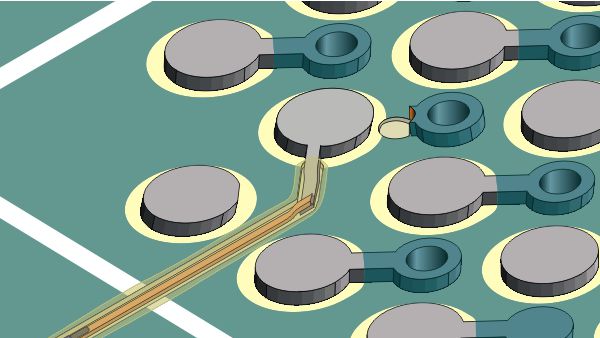This is an example of a project where the solution was more reliable, less labor-intensive, and more elegant than the alternative... dead bugging. (see Figure 1)
If you're unfamiliar with dead bugging, you need to add components to a circuit board and have nowhere to put them, so you glue them upside-down and run jumper wires to complete the circuits. It's usually a big mess.
A military contractor had an engineering change to implement to a batch of circuit boards that involved adding 16 components. The original solution was to dead-bug the components and add 30 jumper wires to some lifted component leads and surface pads.
We were asked if we could improve upon the fix. As always, the need was urgent, and there was no time to re-spin the artwork and fabricate new boards.
In addition to the immediate need for the 25 assembled boards, there was a large number of bare boards at the contract manufacturer that were held up, awaiting a solution.
After reviewing the project, we proposed bonding new copper conductor foil patterns directly to the board surface. Components could then be soldered to the new copper foil patterns at locations designed for each component. This method would also significantly reduce the need for jumper wires.
For this project, the accuracy and placement of the new conductor patterns were critical because these were bare circuit boards, and the contract manufacturer wanted to run the bare boards through their normal stencil printing, placement, and reflow process.
To ensure accuracy, we first milled away the solder mask from the area where the new patterns would be bonded using a milling machine and carbide end mills. (See Figure 2)
Next, the new copper foil patterns were trimmed, positioned using a fiducial reference, and bonded in place using heat and pressure. The copper foil patterns have a dry-film adhesive backing and are designed precisely for this type of application.
This dry-film adhesive bonding method is a common IPC-recommended method for replacing damaged surface mount and BGA pads.
Figure 4 shows the new copper patterns bonded to the circuit board surface.
In this case, the contractor completed the final steps when they ran the bare circuit boards through their normal assembly process.
A hearty handshake and a pat on the back go to the expert technicians at Circuit Technology Center for their pioneering work on this project.

















